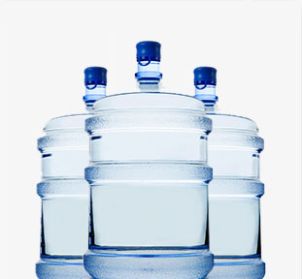
Signs of Lead in Tap Water

Impossible to see, smell or taste, lead is perhaps one of the most perplexing water quality issues. Because there are no true signs of lead in tap water, your best bet is often to have professional water testing to help identify and prevent the risk of exposure.
Here’s what you need to know about lead in the water system and how to get rid of it.
Looking for an easy way to test your water?
Learn more about our free, in-home water testing and schedule your appointment here.
How Do You Know If There’s Lead in Your Drinking Water?
Ever since the health effects of lead became widely known in the 1960s, many people have known to keep an eye out for lead-based paint, plumbing fixtures, toys and more. But how can you ensure there’s no lead contamination in your water supply?
Here’s why the task is complicated:
What Are the Signs of Lead in Water?
Unlike other water quality issues — like sulfur, which announces its presence with a rotten-egg smell — lead can’t be seen or smelled.
What Does Lead in Water Taste Like?
Unfortunately, you’re no better off trying to taste for lead than you would be looking or sniffing for it. This metal is tasteless, which means you may not even know it’s in your water supply.*
What Are the Visible Side Effects of Lead in Water?
Lead is mostly a threat to living things. Your home — including water-using appliances, fixtures and shower walls — won’t be damaged by contamination as they would be from hard water. Human skin doesn’t absorb water-based lead, so you’re even safe to bathe in lead water if necessary.
Common Lead Water Problems
While lead paint may no longer be an everyday concern, and even lead plumbing is becoming less common, this substance can still make its way into your water system. Take a closer look:
What is Lead Poisoning?
When lead builds up in the human body, the result is lead poisoning. Symptoms can vary depending on your age but may include developmental delays, weight loss, abdominal pain, seizures, mood disorders and more. In some cases, lead poisoning can be fatal.
According to the World Health Organization, there’s no known safe level of lead exposure for anyone — however, children are especially vulnerable. That’s because their bodies absorb about four times as much lead as an adult’s, intensifying negative health effects. These consequences can include learning disabilities, behavioral issues and even increased rates of juvenile delinquency.
Lead poisoning prevention involves removing hazards from the immediate environment and sometimes testing blood lead levels. Many areas have programs to help educate citizens about lead exposure, particularly among children, and how to minimize risk.
How Can Lead Get Into the Drinking Water Supply?
In both the United States and Canada, natural water sources and treated municipal water supplies are generally free of lead. In most cases, it’s actually the plumbing — including home valves, faucets, pipes and potentially a lead service line in the city system — that could be leaching lead into your drinking water. This is especially true for private wells, where submersible pumps and aging structures may corrode and result in lead contamination.
Does All Tap Water Have Lead?
Not all tap water contains lead. In fact, there are several variables that determine how much lead could be in a certain water supply, including:
- pH level
- Water source
- Age of the well or household plumbing system
- Temperature
- Presence of minerals, sediment and other potential contaminants
Cities with Notorious Lead Water Problems
Perhaps the most famous case of lead water contamination is the city of Flint, Michigan, where measurement in April 2015 revealed lead levels of 217 – 13,200 parts per billion (ppb) — far over the level established by the U.S. Environmental Protection Agency’s Lead and Copper Rule, which requires action be taken at levels over 15 ppb. Since then, the state has been awarded $100 million in grant funds to help rectify the issue.
Lead Water Testing
Because lead is invisible, tasteless and odorless, you won’t be able to find it on your own. Instead, a water test can help identify its presence.
What Are Lead Water Tests?
Lead water tests help determine whether lead is present in your water supply — and, if so, at what levels. Lead testing tends to be more in-depth, so water samples are generally sent to certified laboratories versus using at-home test kits.
How to Test for Lead in Your Water
Testing for lead contamination on your own can be a headache — and the chances are high that you may not end up with a clear answer once all is said and done. For the best (and easiest) results, it’s ideal to let experts do the testing when it comes to lead water.
Are There Acceptable Levels of Lead in Drinking Water?
Health Canada and the Saskatchewan Environment have set a maximum acceptable concentration of lead in water: 0.010 milligrams per liter, or 10 ppb. In the U.S., the maximum contaminant level goal for lead in drinking water is zero, which is an objective rather than a legal guideline.
Lead Water Solutions
If your lead water test does identify the presence of this sneaky contaminant, what can you do? Here are a few important things to keep in mind:
Does Boiling Water Remove Lead?
Boiling water doesn’t remove lead. In fact, warm or hot water can actually have higher lead concentrations.
How to Remove Lead From Water
Just like lead testing, lead removal usually requires a professional solution. However, in the meantime, note that it’s better to use cold water or even bottled water for drinking and food preparation. It’s also helpful to “flush” your water by running the tap or doing dishes and laundry before you take a drink.
Although these solutions don’t remove lead from water, they do reduce the amount of lead you’ll come into contact with when using your water supply — temporary fixes that will need to be replaced with a more permanent solution.
Lead Water Filters
The best way to reduce lead in your water is to install a high-quality water filtration system. It’s important to make sure your filter is certified to reduce lead — and don’t forget to ask your local water experts for help installing and maintaining a filter system.
Is There a Lead Water Filter Pitcher?
Although water filter pitchers do exist, not all are effective or reliable for high lead levels. In fact, they’re often the least comprehensive when it comes to contaminant reduction. Instead, your best option is a system designed specifically to treat your drinking water at the point of use – these are typically installed under your sink and are often the best choice for drinking water.
Test for Lead in Your Water
Despite its unpleasant reputation and its ability to hide in plain sight, lead doesn’t have to stop you from trusting your water supply. Instead, make water testing a regular habit to stay informed about the quality and contents of your home’s most precious resource — and to get recommendations on which solutions to use if a problem does arise.
Schedule your free, in-home water test today.
*Contaminants may not be present in your water.
Related Articles
FAQ: Are There PFAS in Bottled Water?
8 min read
What is PFAS Water Testing?
11 min read
PFAS Regulations in the U.S.
15 min read
Find A Location Near Me

Schedule Your Free
In-Home Water Test
Get better water in your home by scheduling an appointment with your local Culligan Water Expert.
Discover More
See All Articles

FAQ: Are There PFAS in Bottled Water?
Although drinking water quality has always been important, it’s a particularly hot topic these days — especially as researchers learn more about PFAS, sometimes called “forever chemicals.” These substances have […]
8 min read

Explore

Explore
Our Products

Water Softeners
With any of our soft water systems, get more out of your water-using appliances while spending less on energy and detergent.
View Products

Water Delivery
There’s never been a better time to enjoy the convenience of scheduled bottled water deliveries from the Culligan® Water Experts
View Products

Water Filtration Systems
Culligan's water filtration systems have improved water quality for thousands of families worldwide.
View Products
